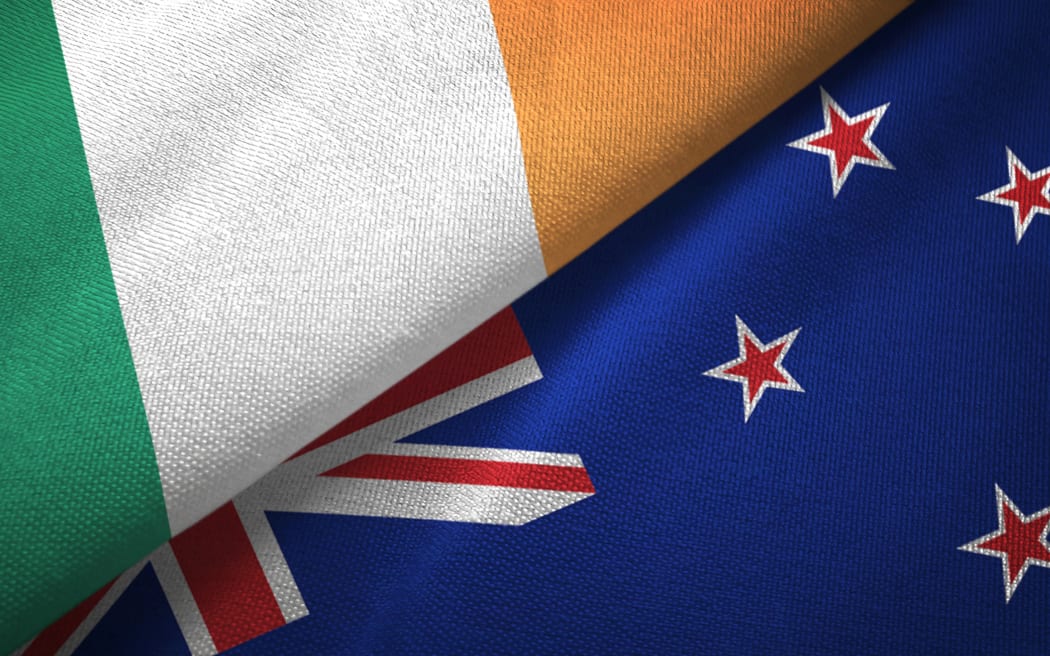
Photo: 123rf
The incoming government wants to grow the economy and attract more foreign investment.
A leading business lobby group is urging us to emulate Ireland, which had a GDP the same size as ours 30 years ago, but now has a GDP twice as big. The statistics are sobering, but is that the full picture?
One of the areas where there may have to be compromises between the parties forming a new government is economic policy.
New Zealand First leader Winston Peters’ views on the economy, international trade and foreign investment “pre-date Rogernomics, in that he has staunchly opposed the neo-liberal views held sacred by the Thatcherite ideologues within the business community, the Luxon-led National Party and the Act Party", columnist Gordon Campbell wrote at Scoop.co.nz.
On his site Politik, veteran political journalist Richard Harman said National would “have to tread between two very different views of how to grow New Zealand’s economy”.
He pointed to a freshly-published report from The NZ Initiative (NZI) think-tank called Irish Secrets - An Irish lesson in prosperity.
Harman said one set of figures stood out in the report: In 1990, New Zealand GDP per head was just under $US15,000 - slightly ahead of Ireland’s. By last year, Ireland’s had jumped to $US127,000, but ours was only $US52,000.
The Irish Secrets report followed a week-long tour of Ireland by three dozen businesspeople in June.
“The Emerald Isle leapt forward, leaving the Land of the Long White Cloud in its wake. Ireland now sits just below the US at sixth while New Zealand languishes at 20th,” NZ Initiative chair Roger Partridge wrote in the New Zealand Herald on their return, about what he called “prosperity’s most meaningful measure” - GDP per capita.
After the Ireland visit in July, NZI executive director Oliver Hartwich made the post-1990 GDP comparison in an interview with Reality Check Radio.
“Ireland has commonsense and we have ideology,” he said.
NZI published a more detailed report - Benchmarking New Zealand's Economic Performance Against Ireland's - in August.
This report said Ireland’s GDP per capita in 2020 was far higher than any other OECD member country, except Luxembourg, because “Ireland has attracted so much overseas investment that a significant proportion of what it produces at home belongs to overseas investors.”
Hartwich didn't mention that in a story he wrote for The Australian at the time, under the headline "For richer or poorer: Kiwis really need to get out more".
“By the early 1990s Ireland had caught up. As of today, depending on which statistic you use, Ireland is about twice as rich as New Zealand,” he wrote.
During the election campaign last month, entrepreneur Sir Ian Taylor aired similar concerns and statistics in the Stuff leaders’ debate.
“In 1990 our GDP - which nobody has talked about today but which pays for everything - was the same as Ireland. It was $45 billion in 1990. Ireland is (now) $529 billion. New Zealand is $250 billion. Nobody is talking about it,” he said.
NZI is now talking about that, after the publication of Irish Secrets last week.

The NZ Initiative's report urges policy makers and businesses to emulate aspects of Ireland's economic approach. Photo: supplied
Former Fonterra executive Fraser Whineray - the head of the delegation to Ireland - highlighted Ireland’s GDP-per-capita surge from 1990 in the foreword of the report - but added this:
“From the outset, it is important to note that Ireland’s GDP figures should be treated cautiously. The presence of multinationals, tax strategies, contract manufacturing, asset depreciation and other statistical nuances can skew these numbers,” he wrote.
That skewing impact on GDP is not highlighted in NZI’s media articles about Irish Secrets, which are also published in the report.
The same day NZI published Irish Secrets, The Economist published a piece headlined What’s weird about Ireland’s GDP?
“Unlike most countries, the measure provides only limited insight into the size of the economy,” The Economist said.
The British publication said Ireland’s corporate tax regime made it a hub for about 1500 multinational tech and pharmaceutical companies.
Their income inflated Ireland’s GDP, but most of it was funneled abroad and should not be fully counted when measuring the size of Ireland’s economy, The Economist said.
The way multinational firms accounted for their assets and profits created staggering GDP increases in Ireland from 2015, big enough to “warp averages across the Eurozone”, The Economist said.
An example: when research and development spending was counted as capital investment, rather than expenditure in 2015, Irish-based multinationals increased the country’s capital stock by $US333b.
In 2018 the International Monetary Fund calculated a quarter of Ireland’s GDP growth could be attributed to global sales of iPhones, because Apple manufacturers in other countries paid the Irish unit to use the intellectual property.
The Economist said the best available measure of the Irish economy is a version of Gross National Income (GNI) modified to account for the distortions.
According to The Economist, Ireland's GNI now stands at $US265b. New Zealand’s GNI was about $US248b in 2022, about the same as our GDP, according to World Bank data.
In 2021, a former governor of Ireland’s central bank, Patrick Honohan, warned that GDP stats were misleading.
“Ireland is a prosperous country, but not as prosperous as is often thought. Using GDP as a measure can mislead analysis of such matters as debt, carbon intensity and inequality,” he said.
Ireland’s inward investment has certainly made it much better off since 1990 - and has left New Zealand’s inward investment in the shade.
The NZI’s Irish Secrets reports back on aspects of Ireland’s economic progress, such as improved productivity and education, that New Zealand could learn from.
“Foreign firms employed more than a tenth of Ireland’s workforce before the arrival of COVID-19 and, with pharma and tech exports booming amid the crisis, are providing pandemic-proof employment and record tax payments,” an economic review by Politico pointed out in early 2021.
But the message that New Zealanders have become half as rich as the Irish within a generation - on the basis of an essentially incompatible measure - is not the full picture of Ireland’s path to prosperity.


